

2
TABLE OF CONTENTS
Introduction 3
First Step- Determine Your Soil Type 4
Determining Soil Type
Type I Soil Identication
Type II Soil Identication
Recommended Installation Practices 5-6
TypeI
Type II - Standard
Type II - Advanced
Type II - Premium
Other Considerations 7
Concrete
Planter Areas and Walkways
Areas Subject to Heavy Rainfall
References 8

3
INTRODUCTION
It is true that all B-K Lighting in-grade luminaire
products are IP68 rated, which means that they
can withstand submersion of up to one meter, it
is also understood that for years of trouble free
performance, it is best that the soil around the
recessed housing provide for ample drainage.
B-K Lighting with the help of Rick Helgeson,
PE, of Helgeson Engineering has developed a
comprehensive system to help the specier and
the installer determine the need for and the best
practice, to specify and install in-grade luminaires.
Soil type aects all construction projects and
the type of soil present dictates whether or not
your construction will be aected by drainage.
Specically, the permeability of the soil (the ability of
water to move within a soil) is the controlling factor.
In general, the larger the void spaces a soil type
possess (the “gaps” between soil particles), the
greater its permeability will be. Conversely, the
smaller the void spaces, the less the permeability.
Therefore, coarse-grained soils such as sand
commonly exhibit higher permeability rates, while
ne-grained soils like clay ordinarily have lower
permeability rates.
Because of the higher permeability, sandy and
granular soils are considered to be “free draining.”
Silty and clayey soils have poor permeability and
therefore have poor drainage characteristics. Clayey
soils also tend to swell when saturated with water
and shrink as they dry out.
In some locations, such as the San Joaquin Valley
of California, topsoil can have underlying layers of
highly compacted soil commonly called “hardpan.”
A hardpan layer will inhibit subsurface drainage
as it creates a barrier that water cannot freely pass
through.
Soils have been classied into two types for simple
“in the eld” identication without the need of the
sophisticated analysis. Best installation practices
have been recommended based on these general
soil classications.

4
FIRST STEP DETERMINE YOUR SOIL TYPE
The factors involved in considering whether or not
water might maintain a constant presence (constant
soil saturation), will require the specier or installer
to examine a few variables. The obvious controlling
variables are a project’s location, the existing soil type,
and the installation practice itself.
Soil type is in reference to the existing soil at the
installation site itself. Since the soil’s ability to drain
is in direct relationship to its type, it is important to
be able to distinguish or classify what kind of soil is
present at the project site.
Type I
This soil is basically an easily/free draining soil. In
general, this type of soil has very little or no clays
and may have a “sandy” feel or look to it. Digging is
probably easy to moderate in diculty and water
freely percolates into the ground.
Type II
This soil is a medium to dicult draining soil. Typically
these types of soils will consist of varied amounts of
clays and or “hardpan.” These soils are very dicult
to dig in and water pools even in small amounts sine
the soil does not readily percolate standing water
well. This type of soil can take hours or even days to
“drain” standing water, especially if the soil is already
saturated.
Determine Soil Type
The soil’s ability to drain and thus optimize your lighting installation is directly related to its soil type.
1. Dig a hole at least 18 inches in diameter
and 18 to 24 inches in depth.
2. Fill the hole half way with water.
3. Time how long it takes for the water to
percolate (drain) into the soil.
4. If the time is less than 2 hours, the soil
is TYPE I.
5. If the time is greater than 2 hours, the soil
will be TYPE II.
Use this simple test to determine your soil type:

5
RECOMMENDED INSTALLATION PRACTICES
*NOTE: It is NOT recommended that the backll material be gravel, rock, or crushed rock. Geotechnical research and analysis has proven that
migration of soil particles from a ne soil into a coarse backll will take place over time. This results as water carries ner soil particles into the pores
(void spaces) of the coarser backll. The resultant of this could cause the ground around the light installation to sink, settle irregularly, or cause the
lighting housing to shift.
Type I
This type of soil is the preferred site condition. If your
project site is comprised of TYPE I soil, no additional
installation preparation should be needed based
on the soil’s drainage properties. Be sure to review
the “Other Considerations” section, as additional
installation practices may want to be implemented
in conjunction with TYPE I soil based on project site-
specic situations.
Standard TYPE II Installation (Recommended)
Standard TYPE II installation should consist of over-
excavating the hole for the lighting housing 12 to 18
inches in additional depth (see Detail A). The over-
excavated portion of the dig should be lled with
sand.*
The sand backll should be moistened and compacted.
After compaction, the sand can be easily adjusted to
maintain the proper grade for the installation of the
housing.
Prior to the nal setting of the housing, it is
recommended that lter material be placed between
the sand and the bottom of the housing. This will help
keep the sand out of the perforated housing (bottom)
without inhibiting its self-draining properties
necessary to rid the housing of internal condensation
moisture.
Type II
There are three levels of installations recommended for TYPE II soil.
Detail A (Standard Type II Installation)

6
Premium TYPE II installation is the same as the standard
installation with the inclusion of subsurface drains
(see Detail C). The drains can be PVC or the standard
“ex” drain that is commonly available for landscape
drainage (some of these drainage pipes can be found
pre-perforated).
To make your own perforated pipe, drill ¼-inch to 3/8-
inch holes in the 8:30 to 10:30 position and the 1:30
to 3:30 position only where the pipe is directly under
the housing, the top and bottom of the pipe must be
kept solid
Install the perforated pipe directly under each
housing with the holes in the 8:30 to 10:30 and 1:30
to 3:30 position and within the sand lled backll. The
pipe must be wrapped with lter material so the sand
backll does not erode into the drainage system and
to prevent clogging.
The perforations will allow the water that is migrating
to the sand to leach into the pipe. As an example,
with a linear installation of light xtures, a continuous
pipe can be constructed to aid the drainage of all
the housings with the use of one or more outlets as
RECOMMENDED INSTALLATION PRACTICES
Advanced TYPE II Installation
Advanced TYPE II installation is the same as the
standard installation with the inclusion of trenching
between housing installations and/or lower elevations.
These connecting trenches should be backlled with
compacted sand. Water will migrate through the sand
to the lower elevations naturally via gravity (see Detail
B).
Premium TYPE II Installation
Detail B (Advanced Type II Installation)

7
Other Considerations
desired. It should be noted that each installation can
vary greatly and the drainage pipe should maintain
a grade dierence to ensure that collected water will
ow to the outlet. Optimum drainage will be achieved
if the pipe is installed at ½% (0.5-foot of drop per 100-
foot) slope or greater (a minimum slope of 0.15% is
sucient to promote adequate drainage).
The pipe should be at least 3-inches from the bottom
of the sand or the bottom of the housing. The water
will drain freely from the sand through lter material
into the pipe. Sand is the recommended backll
material since it will readily promote drainage of the
adjacent soil, sand will not allow the migration of
adjacent soil particles, and can be easily compacted
- properties that are preventative against settlement
without compromising the ease of installation.
Concrete
If you are installing the lighting xtures in concrete
and there is a minimum of 5 feet of distance between
the lighting xture and nearby soil, TYPE I installation
practices are recommended. (Concrete protects the
nearby soil from saturation and the presence of water
should not be a factor.)
Planter Areas and walkways
If the lighting xtures will be installed between a
walkway and another landscape feature (such as a
building and a sidewalk), TYPE II installation practices
are recommended.
Areas subject to heavy rainfall
Advanced or Premium TYPE II installation practices are
recommended unless the existing soil demonstrates
good TYPE I characteristics.
RECOMMENDED INSTALLATION PRACTICES
Detail C (Premium Type II Installation)
1
/
4"
-
3
/
8"
Holes
Filter
Material

REFERENCES
Brown, S.A., Stein, S.M., Warner, J.C. Urban Drainage Design Manual - Second Edition.
Ayres Associates for FHWA, (2001).
Dunn, I.S., Anderson, L.R., Kierfer, F.W., Fundamentals of Geotechnical Analysis.
John Wiley & Sons, (1980).
Liu, Chang, and Evett, Jack B. Soils and Foundations - Fourth Edition.
Prentice - Hall, Inc., (1998).
40429 Brickyard Drive • Madera, CA 93636 • USA • 559.438.5800 • FAX 559.438.5900
visit us online at bklighting.com • email us at [email protected]om
2019 by B-K Lighting Inc. All rights Reserved.
Proud corporate member of these organizations
“The GreenSource Initiative™ addresses the environmental needs of proper resource management and higher energy
efficacy. It is a natural extension of our corporate philosophy, which is to provide the lighting industry with quality and
innovative products. As environmental stewards, we connect our customers, our employees and our business to the
betterment of the environment through investment, incentives, manufacturing processes and innovatively designed
light sources. It makes perfect sense for today and for future generations to come.”
Visit www.bklighting.com/greensource for details.
B-K LIGHTING
-
 1
1
-
 2
2
-
 3
3
-
 4
4
-
 5
5
-
 6
6
-
 7
7
-
 8
8
B-K lighting TY2 User guide
- Type
- User guide
- This manual is also suitable for
Ask a question and I''ll find the answer in the document
Finding information in a document is now easier with AI
Related papers
-
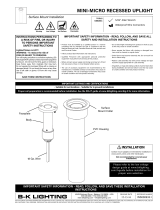 B-K lighting Mini-Micro Surface Mount Installation guide
B-K lighting Mini-Micro Surface Mount Installation guide
-
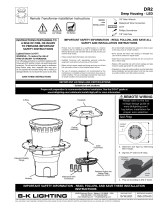 B-K lighting DR2 Remote Deep Installation guide
B-K lighting DR2 Remote Deep Installation guide
-
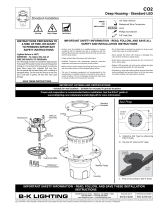 B-K lighting CO2 Remote Deep Housing Installation guide
B-K lighting CO2 Remote Deep Housing Installation guide
-
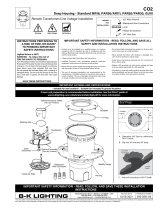 B-K lighting CO2 Remote Deep Housing - PAR20/30 Installation guide
B-K lighting CO2 Remote Deep Housing - PAR20/30 Installation guide
-
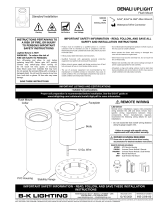 B-K lighting Denali Flush Mount Installation guide
B-K lighting Denali Flush Mount Installation guide
-
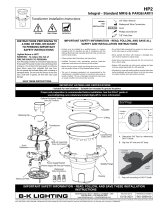 B-K lighting LED Lamp - MR16 Installation guide
B-K lighting LED Lamp - MR16 Installation guide
-
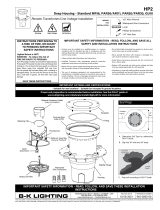 B-K lighting HP2 Remote Deep Housing - AR111/PAR36 Installation guide
B-K lighting HP2 Remote Deep Housing - AR111/PAR36 Installation guide
Other documents
-
Advanced Drainage Systems 0815AA Installation guide
-
Smartec FPC-2 Pneumatic Piezometer Owner's manual
-
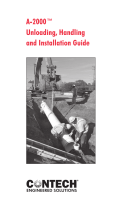 Contech Construction A2PG081250 Installation guide
Contech Construction A2PG081250 Installation guide
-
Legrand Outdoor Ground Box Installation guide
-
Legrand XBLNT Installation guide
-
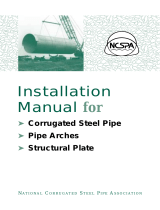 Contech Engineered Solutions CMSP16U20 Installation guide
Contech Engineered Solutions CMSP16U20 Installation guide
-
Smartec FOP Piezometer Owner's manual
-
Advanced Drainage Systems 42650013IBPL Installation guide
-
Advanced Drainage Systems 15650013IBPL Installation guide
-
TRENCH TOUGH PLUS 043222 Installation guide
















